How long does a pine tree grow, how to accelerate and stop growth?
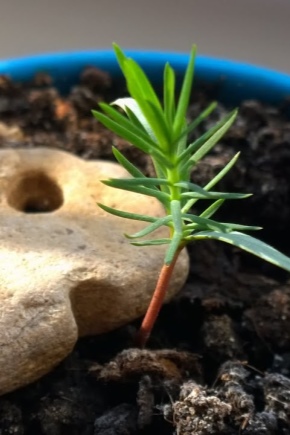
Pine is a beautiful coniferous tree that adorns both natural landscapes and parks, squares and gardens. It will not be difficult to grow it even for a simple amateur gardener, but so that the plant does not die and continues to delight the owner for many years, you need to listen to the advice of experienced specialists.
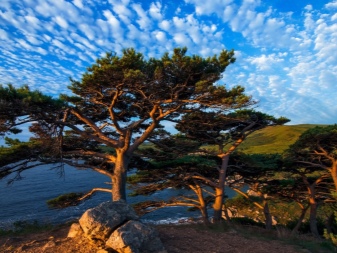
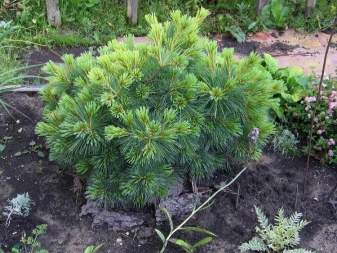
Growth rate
There are about 16 species of pines in Russia. These conifers grow relatively quickly and grow from 2 to 20 meters in height. Annual growth in cm depends on the type of plant, but the largest number of centimeters is observed at the initial stage of tree development. At a later time, starting from the fifth year of the seedling's life, the growth in height is no longer so impressive. Consider the main periods of pine life and the corresponding growth rate.
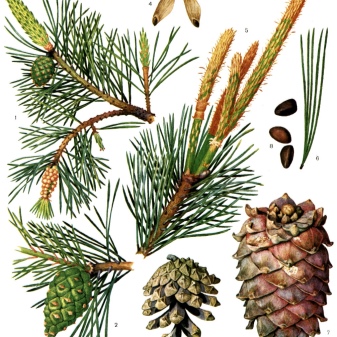
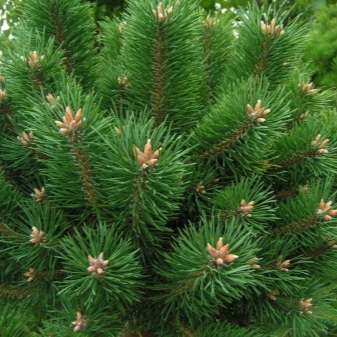
From germination up to 5 years
A tiny sprout 5 cm in size is a whole year of the life of a young pine. Delicate plants have not yet matured at all, and special care is needed for them. In the first years of life, the pine is recommended to be regularly watered and exposed to the sun, since the shoots are unlikely to develop well in the shade. The root system is still tender and fragile, so the seedlings are not touched for two years.
In the third year, the sprouts are transplanted in order to provoke the growth of the root system. Until the time of planting, the roots of young pines are fragile and poorly adapted to life in the open field. Seedlings are planted at a distance of 20 cm from each other. After transplanting, their annual growth should be about 15 cm.
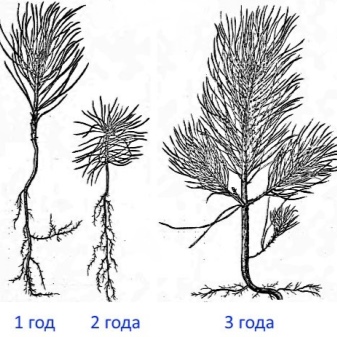
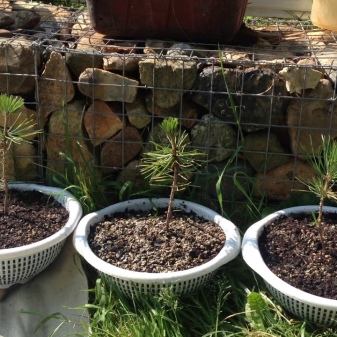
They are still far from maturity, because they will be ready for transplantation to a permanent place of residence only at the age of 4 years, when they reach a height of 0.5 m.At five years, seedlings reach a size of 80-90 cm
5 to 50 years old
Most of the pines are fast-growing species. This must be taken into account when choosing a tree for your personal plot, since some specimens can become real giants already at the age of 20-30.
From 5 to 10 years, many pines give a decent growth: about 0.5 m in height. Older specimens are even more - they grow up to 1 m in height a year. After the beginning of fruiting, the growth of the tree slows down. After 30-50 years, trees begin to grow more in breadth than in height, and the crown becomes more spreading. Many species grow up to 300 years or more without slowing down the growth rate. Recorded among the breed record holders who have lived for 5 thousand years. Therefore, for landscape design of a small area, it is better to pay attention to the dwarf species of this breed. For example, mountain pine "Gnome" has a pyramidal crown up to 2 m high.

What influences?
First of all, the pine species influences the growth rate. There are faster-growing specimens, such as Scots pine and Weymouth, and slow-moving species - the Strickta cedar pine.
The growth and development of a tree is greatly influenced by the growing conditions, although the pine is considered one of the most unpretentious plants. If you keep the pine in the shade, then at first it will give higher growth rates, but then they will decrease. It is also impossible to leave young plants without watering. Lack of the proper amount of moisture leads to a halt in the growth and development of the tree.
When determining a planting site, it is worth considering the optimal distance from other plants. In the shade and in close proximity, pines will not grow as productively as they could.Birch, fir, juniper will become good neighbors.
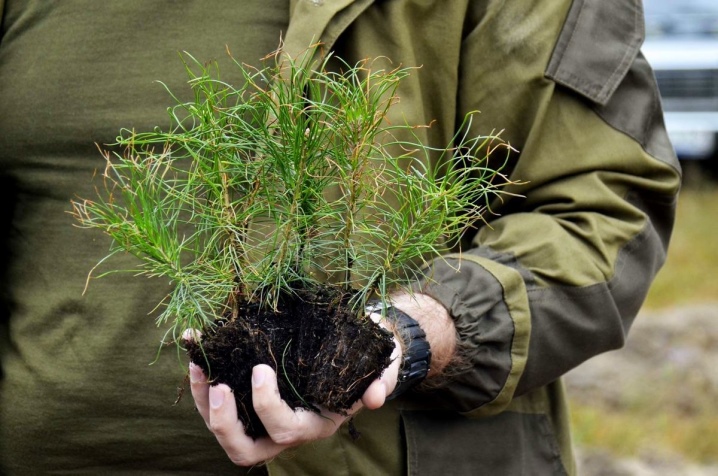
When transplanting seedlings and large-sized plants, a temporary stop in growth may occur. Thus, the pine will compensate for the damage to the root system and grow new roots instead of the lost ones. In the first five years of life, it is advisable to cover the seedlings with spruce branches or agrofibre for the winter to avoid frostbite and snow breaking off the branches.
The life span of a pine tree and its growth is influenced by the level of occurrence of groundwater. If it is higher than 2 m from the surface, then it impairs the aeration of the roots, which directly affects the growth of the tree.
The good development of the plant also ensures an optimal organo-mineral composition of the soil. A sufficient amount of trace elements useful for pine can cause a good growth rate of the tree.
Many climatic conditions also have a negative impact on pine growth. For example, sudden changes in temperature, high humidity, strong winds and other factors.
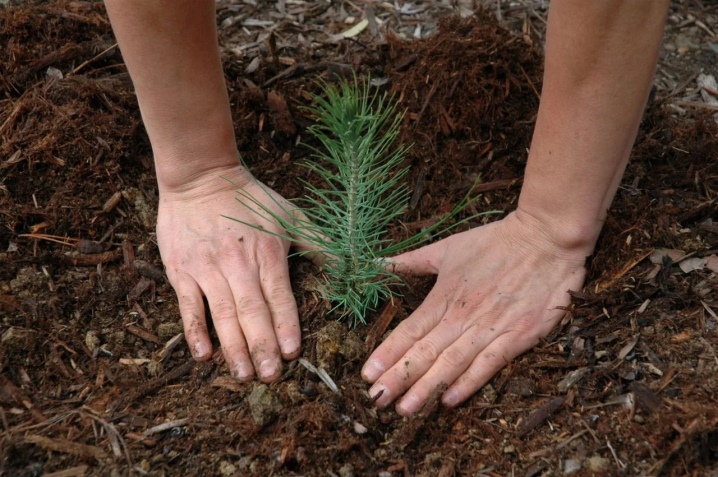
Various pests have a strong negative effect on the development of pine and the durability of the tree. It is necessary to regularly inspect the trunk and crown of the ephedra in order to notice the beginning signs of damage in time.
How to feed?
Growing a pine tree is quite simple, but you need to know that in the first two years of a plant's life, it must be fertilized. With a lack of nutrients, the pine loses its attractive appearance: the needles can turn yellow and crumble. In addition to the loss of decorative properties, the tree can stop its growth. In order to return the beauty and the ability to develop to the pine, the plant must be fed. For these purposes, the following options are suitable.
- In order to accelerate the growth of a young plant, rotted compost or biological humus should be introduced into the soil. When choosing a universal fertilizer for pines, pay attention to the composition: it must contain at least 10 elements. For young plants, it is better to use liquid dressings: they are absorbed faster than granular ones.
- Preparations such as epin and zircon are good growth accelerators for pines. They mobilize the plant and accelerate growth due to its internal reserves. However, such solutions can deplete the plant, so it is recommended to add them in combination with vitamin and mineral supplements.
- For pines living on poor soils, root feeding is imperative. Traditionally, it is brought in in spring or autumn. Also, stem injections of immunostimulants and growth stimulants will have a good effect on the growth and development of the plant.
- The "Green Guy" can be referred to as a universal fertilizer that will positively affect the growth and development of pine. Fertilizer is applied around the trunk at the rate of 25 g per cubic meter.
- There is also a drug of the same name - a conifer growth activator. It helps the tree become more resilient, and also creates the prerequisites for the development of beneficial microbiota in the pine growth zone. It comes in both liquid and dry form.
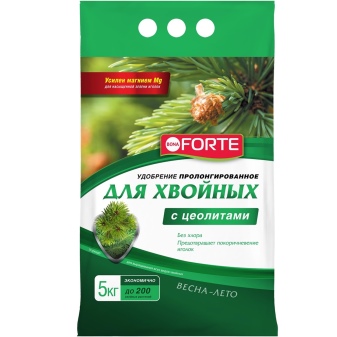
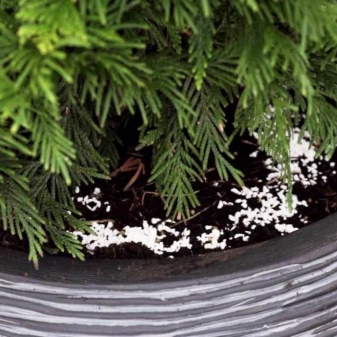
It is important not to overfeed the plant, as an excess of minerals will stress the pine, and the tree will survive the winter much worse. Pines older than two years of age are usually not fed, as they become completely unpretentious to care for. To improve the growing conditions of pines, their fallen needles are not removed, since it forms a protective layer on the surface of the earth, and useful substances and microbiota accumulate in it.
How to stop the growth?
The growth of pine in height can be a real problem, because the tree grows very quickly, and this is not always good, especially for a small suburban area. It is quite possible to limit the growth of a tree if you know how to do it correctly. You can get a spreading crown and a shorter trunk by adjusting the central shoot.
Adjusting the growth of a pine is done simply by pinching the upper shoot, popularly called a candle. This can be done on seedlings that have already formed 3 levels of branches. Very young plants should be pinched only in cases of extreme necessity, but it is better to wait until they are 4-5 years old. The procedure is carried out in spring or autumn.
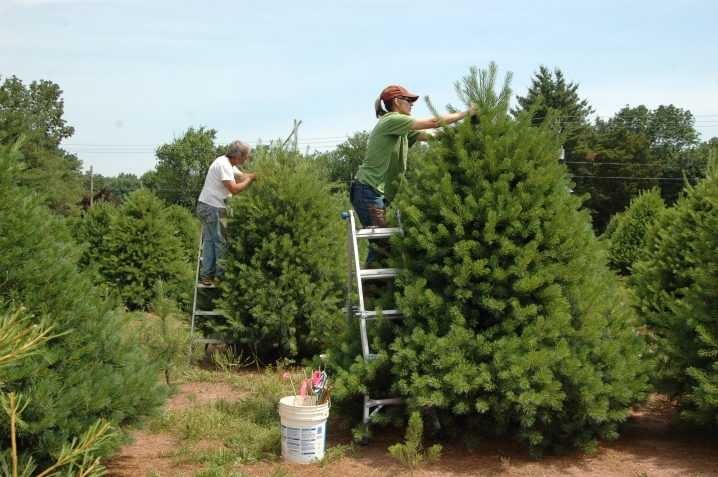
For information on how to care for a pine tree, see the next video.



































































The comment was sent successfully.